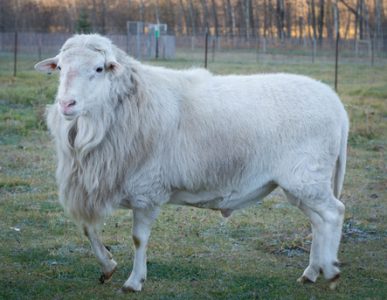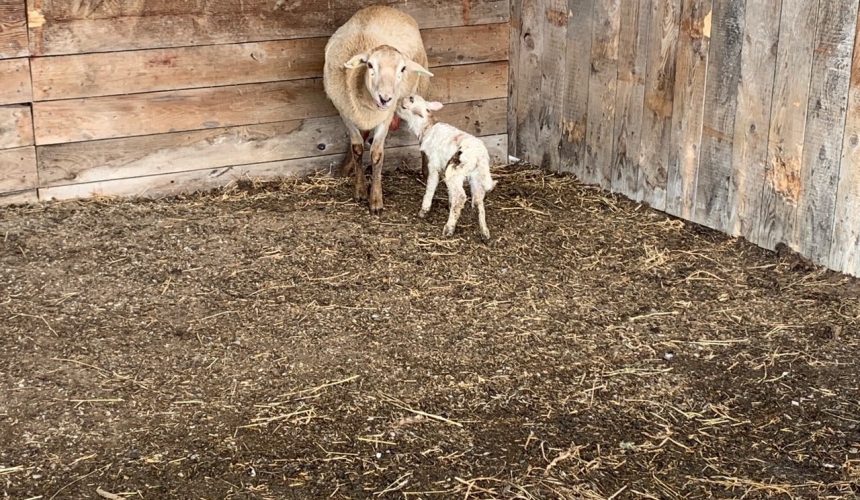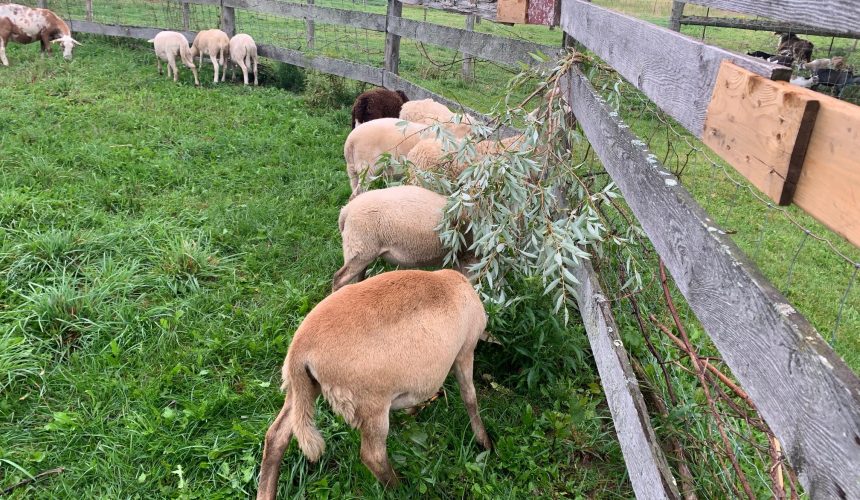Katahdin Hairsheep Breeding Stock
You can now own from our family of Katahdin hair sheep
what we offer
We offer Katahdin hair sheep breeding stock for sale based on availability. This would be a great opportunity for those who want to raise a flock of these calm, low maintenance and productive animals that offer many exceptional advantages over other breeds of sheep.
Advantages of Raising Katahdin Sheep:
- Katahdins are hardy, adaptable, low maintenance sheep that produce superior lamb crops and lean, meaty carcasses.
- They are highly resistant to parasites than other breeds of sheep and require very low if any worming attention.
- They do not produce a fleece and therefore do not require shearing.
- They are medium sized and efficient, bred for utility and for production in a variety of management systems.
- Katahdin breed’s meat is naturally low-fat and desired by many restaurant chefs and customers.
- The breed is highly known for its wonderful “milk-lamb” flavour that keeps even as the sheep matures older and does not become “gamy”.
- Ewes have exceptional mothering ability and lamb easily; the vast majority of lambs are born vigorous and alert.
- The breed is ideal for pasture lambing although they will also do well in a barn setting that is cleaned and cared for.
- Katahdin sheep are high grass-to-meat converters and a suitable choice for grass/forage-based management systems.
- Winter hardy and able to forage for feed in stockpile grass (they dig in search of available winter forage)
- They grow a thick layer of hair that keep them warm during the cold of winter and shed that layer during warmer days.
- No shearing required and when properly and adequately pastured they do not require hoof trimming.
If you are interested to own your own Katahdin line of sheep, fill the form below (along with your preferences) and we will contact you.
Ram Lamb
- From twins or triplet set
- Born from a proven ewe
- Rehomed 2-3 months weaning
Ewe Lamb
- From twins or tripplets
- Born from a proven ewe
- Rehomed 2-3 months weaning
Breeding Ram
- Proven Ram ready for ewes
- Selected as fast grower
- Parasite resistant
Breeding Ewe
- Easy Lamber
- Proven mother
- Min twins history
If Interested, Please Fill Form Below
More About Katahdin Sheep
Adaptability: Katahdins have demonstrated wide adaptability. They were derived from breeds that originated in the Caribbean and British Islands, and the state of Maine was their original home. In cold weather, they grow a very thick winter coat which then sheds during warm seasons. Their smooth hair coat and other adaptive characteristics allow them to tolerate heat and humidity well. Katahdins are also significantly more tolerant of internal and external parasites than wooled sheep, and if managed carefully require only minimal parasite treatment.

Temperament: Katahdins are docile so are easily handled. They exhibit moderate flocking instinct.
Size: Live weight of a mature ewe in good condition usually ranges from 125 to 185 pounds; a mature ram will weigh 180 to 250 pounds. Average birth weight of twins is about 8 pounds.
Reproduction: Ewes and rams exhibit early puberty and generally have a long productive life. Mature ewes usually have twins, occasionally producing triplets or quadruplets. A well-managed and selected flock should produce a 200% lamb crop. Rams are aggressive breeders, generally fertile year round, and can settle a large number of ewes in the first cycle of exposure. With selection a flock can consistently lamb throughout the year.
Mothering: The Katahdin ewe shows a strong, protective mothering instinct, usually lambs without assistance, and has ample milk for her lambs. Rejection of lambs is rare.
Carcass and Growth: Lambs produce a high quality, well-muscled carcass that is naturally lean and consistently offers a very mild flavor. Lambs are comparable to other medium-sized maternal breeds in growth and cut-ability. Lambs are desirable for specialty markets at a variety of ages and weights; wethers are appropriate for conventional North American markets at 95 to 115 pounds.
Coat: The hair coat of the Katahdin varies in length and texture among individuals and can be any color or color combination. It generally consists of coarse outer hair fibers and an undercoat of fine woolly fibers that becomes very thick and longer if cold weather sets in and day length decreases. This undercoat and some hair naturally sheds as temperature and day length increase seasonally, leaving a shorter, smooth summer coat. While some uses may be found for the shed fiber, it is generally not harvested.
Crossbreeding: The Katahdin can be used in crossbreeding programs. When crossed with wool sheep, the first generation offspring will in most cases have wool fleeces with hair interspersed (the wool from such crosses should be segregated to avoid contaminating higher quality wools). It usually takes at least 3 generations, depending on the type of wool sheep parentage, to obtain offspring with a shedding hair coat and other purebred characteristics. Katahdin ewes are well-suited as a base in a terminal sire crossbreeding program to produce market lambs.












